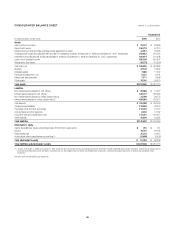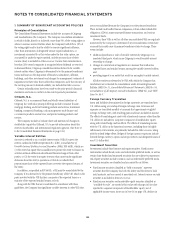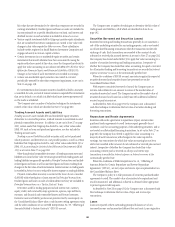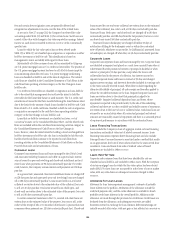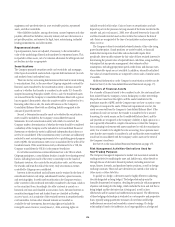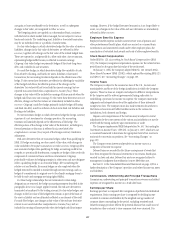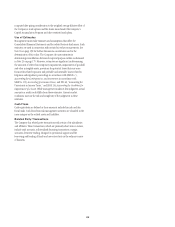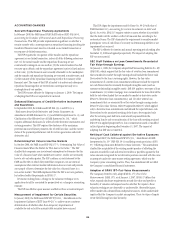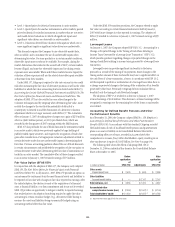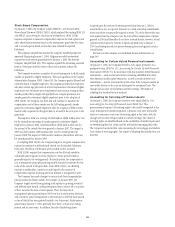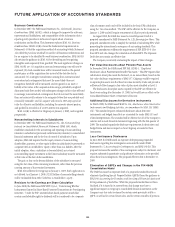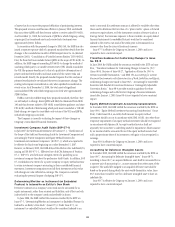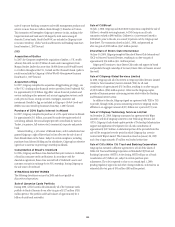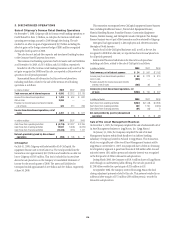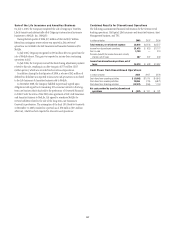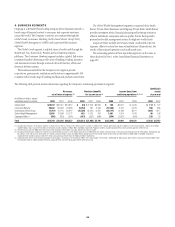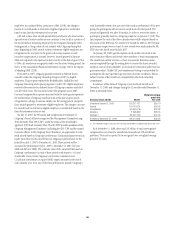Citibank 2008 Annual Report Download - page 137
Download and view the complete annual report
Please find page 137 of the 2008 Citibank annual report below. You can navigate through the pages in the report by either clicking on the pages listed below, or by using the keyword search tool below to find specific information within the annual report.Stock-Based Compensation
On January 1, 2006, the Company adopted SFAS No. 123 (revised 2004),
Share-Based Payment (SFAS 123(R)), which replaced the existing SFAS 123
and APB 25, Accounting for Stock Issued to Employees. SFAS 123(R)
requires companies to measure compensation expense for stock options and
other share-based payments based on the instruments’ grant date fair value,
and to record expense based on that fair value reduced by expected
forfeitures.
The Company adopted this standard by using the modified prospective
approach. Beginning January 1, 2006, Citigroup recorded incremental
expense for stock options granted prior to January 1, 2003 (the date the
Company adopted SFAS 123). That expense equaled the remaining unvested
portion of the grant date fair value of those stock options, reduced by
forfeitures.
The Company maintains a number of incentive programs in which equity
awards are granted to eligible employees. The most significant is the Capital
Accumulation Program (CAP). Under CAP, the Company grants deferred and
restricted shares to eligible employees. The program provides that employees
who meet certain age plus years-of-service requirements (retirement-eligible
employees) may terminate active employment and continue vesting in their
awards provided they comply with specified non-compete provisions. For
awards granted to retirement-eligible employees prior to the adoption of
SFAS 123(R), the Company has been and will continue to amortize the
compensation cost of these awards over the full vesting periods. Awards
granted to retirement-eligible employees after the adoption of SFAS 123(R)
must be either expensed on the grant date or accrued in the year prior to the
grant date.
The impact to 2006 was a charge of $648 million ($398 million after tax)
for the immediate expensing of awards granted to retirement-eligible
employees in January 2006, and $824 million ($526 million after tax) for
the accrual of the awards that were granted in January 2007. The impact to
2007 was $467 million ($290 million after tax) for awards granted in
January 2008. The impact to 2008 was $110 million ($68 million after tax)
for awards granted in January 2009.
In adopting SFAS 123(R), the Company began to recognize compensation
expense for restricted or deferred stock awards net of estimated forfeitures.
Previously, the effects of forfeitures were recorded as they occurred.
SFAS 123(R) requires that compensation cost for all stock awards be
calculated and recognized over the employees’ service period (which is
generally equal to the vesting period). For stock options, the compensation
cost is determined using option pricing models intended to estimate the fair
value of the awards at the grant date. Under SFAS 123(R), an offsetting
increase to stockholders’ equity is recorded equal to the amount of
compensation expense. Earnings per share dilution is recognized as well.
The Company has made changes to various stock-based compensation
plan provisions for future awards. For example, in January 2005, the
Company largely moved from granting stock options to granting restricted
and deferred stock awards, unless participants elect to receive all or a portion
of their award in the form of stock options. Thus, the majority of
management options granted since 2005 were due to stock option elections
and carried the same vesting period as the restricted or deferred stock awards
in lieu of which they were granted (ratably, over four years). Stock options
granted since January 1, 2003, generally have three- or four-year vesting
periods and six-year terms. In addition, the sale of underlying shares
acquired upon the exercise of options granted since January 1, 2003 is
restricted for a two-year period. Pursuant to a stock ownership commitment,
senior executives are generally required to retain 75% of the shares they own
and acquire from the Company over the term of their employment. Options
granted in 2003 and thereafter do not have a reload feature; however, reload
options received upon the exercise of options granted prior to January 1,
2003 (and subsequent reload options stemming from such grants) retain a
reload feature.
See Note 8 to the Company’s Consolidated Financial Statements on
page 140.
Accounting for Certain Hybrid Financial Instruments
On January 1, 2006, the Company elected to early-adopt, primarily on a
prospective basis, SFAS No. 155, Accounting for Certain Hybrid Financial
Instruments (SFAS 155). In accordance with this standard, hybrid financial
instruments—such as structured notes containing embedded derivatives
that otherwise would require bifurcation, as well as certain interest-only
instruments—may be accounted for at fair value if the Company makes an
irrevocable election to do so on an instrument-by-instrument basis. The
changes in fair value are recorded in current earnings. The impact of
adopting this standard was not material.
Accounting for Servicing of Financial Assets
On January 1, 2006, the Company elected to early-adopt SFAS No. 156,
Accounting for Servicing of Financial Assets (SFAS 156). This
pronouncement requires all servicing rights to be initially recognized at fair
value. Subsequent to initial recognition, it permits a one-time irrevocable
election to remeasure each class of servicing rights at fair value, with the
changes in fair value being recorded in current earnings. The classes of
servicing rights are identified based on the availability of market inputs used
in determining their fair values and the methods for managing their risks.
The Company has elected fair value accounting for its mortgage and student
loan classes of servicing rights. The impact of adopting this standard was not
material.
131


